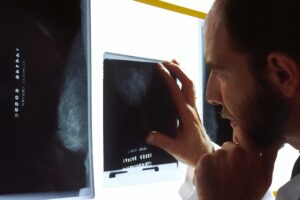
KANSAS CITY, MO — July 14, 2025 — In a groundbreaking discovery, scientists at the Stowers Institute for Medical Research have identified two distinct genes that guide the regeneration of sensory cells in zebrafish. This finding, published in Nature Communications, could pave the way for advancements in hearing loss research and regenerative medicine in mammals, including humans.
Unlike humans, who cannot naturally regenerate most body parts, certain animals like fish, frogs, and chicks can effortlessly regrow sensory hair cells. These cells, when damaged in humans, often lead to permanent hearing loss, deafness, or balance issues. The new research provides a deeper understanding of how zebrafish regenerate these cells and may offer clues for future studies aimed at human applications.
Understanding Zebrafish Regeneration
The study, led by former Stowers Researcher Mark Lush, Ph.D., and co-authored by Stowers Investigator Tatjana Piotrowski, Ph.D., focuses on how cell division is regulated to promote hair cell regeneration while maintaining a steady supply of stem cells. The team discovered that two different genes, each regulating cell division, control the growth of two key types of sensory support cells in zebrafish.
“Mammals such as ourselves cannot regenerate hair cells in the inner ear,” said Piotrowski. “As we age or are subjected to prolonged noise exposure, we lose our hearing and balance.”
“During normal tissue maintenance and regeneration, cells need to proliferate to replace the cells that are dying or being shed — however, this only works if there are existing cells that can divide to replace them,” explained Piotrowski.
The Role of Neuromasts in Zebrafish
Zebrafish serve as an excellent model for studying regeneration due to their transparent development and accessible sensory organ systems. Their sensory organs, called neuromasts, are dotted in a straight line from head to tailfin and resemble a garlic bulb with “hair cells” sprouting from the top. Supporting cells surrounding the neuromast give rise to new hair cells, similar to those in the human inner ear.
By manipulating genes, scientists can test which ones are crucial for regeneration. This research aims to uncover why similar regeneration does not occur in mammals and whether it might be possible to encourage this process in the future.
Implications for Human Medicine
The study revealed that two key populations of support cells contribute to regeneration within neuromasts: active stem cells at the neuromast’s edge and progenitor cells near the center. These cells divide symmetrically, allowing continuous production of new hair cells without depleting stem cells. The team used sequencing techniques to identify two distinct cyclinD genes active in each cell type, discovering that these genes regulate cell division independently.
“When we rendered one of these genes non-functional, only one population stopped dividing,” Piotrowski noted. “This finding shows that different groups of cells within an organ can be controlled separately, which may help scientists understand cell growth in other tissues, such as the intestine or blood.”
David Raible, Ph.D., a professor at the University of Washington, commented on the study’s significance. “This work illuminates an elegant mechanism for maintaining neuromast stem cells while promoting hair cell regeneration. It may help us investigate whether similar processes exist or could be activated in mammals.”
Future Directions and Broader Implications
Because cyclinD genes also regulate proliferation in many human cells, such as those in the gut and blood, the findings may have implications beyond hair cell regeneration. Insights from zebrafish could eventually inform research on other organs and tissues, both those that naturally regenerate and those that do not.
Additional authors of the study include Ya-Yin Tsai, Shiyuan Chen, Daniela Münch, Julia Peloggia, Ph.D., and Jeremy Sandler, Ph.D. The research was funded by the National Institute on Deafness and Other Communication Disorders of the National Institutes of Health (NIH), the Hearing Health Foundation, and the Stowers Institute for Medical Research.
About the Stowers Institute for Medical Research
Founded in 1994 by Jim and Virginia Stowers, the Stowers Institute for Medical Research is a non-profit biomedical research organization focused on foundational research. Its mission is to expand our understanding of life’s secrets and improve quality of life through innovative approaches to disease causes, treatment, and prevention. The Institute comprises 20 independent research programs with over 370 scientific staff, including principal investigators, technology center directors, postdoctoral scientists, graduate students, and technical support staff.
For more information, visit www.stowers.org and learn about its graduate program at www.stowers.org/gradschool.






